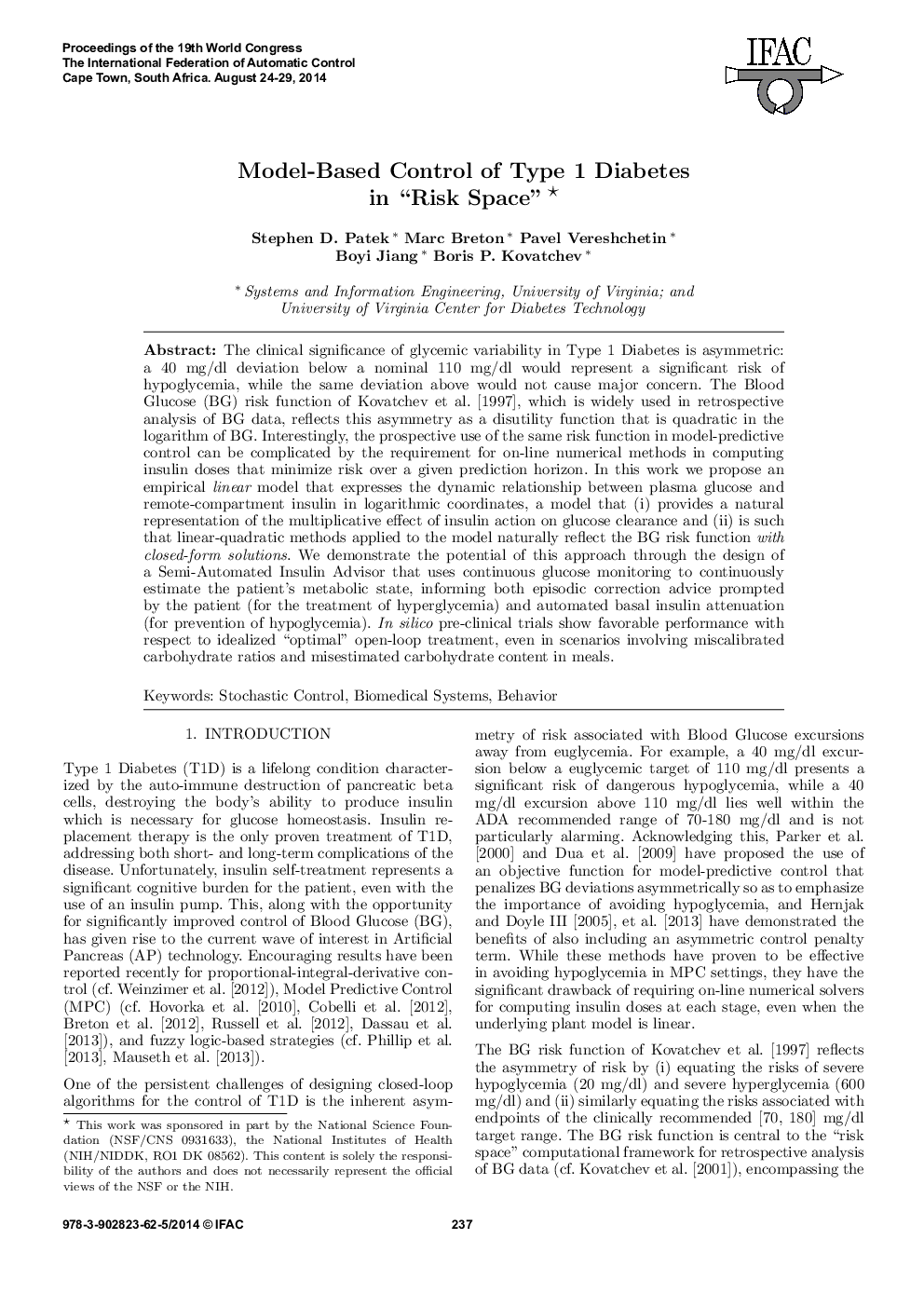| Article ID | Journal | Published Year | Pages | File Type |
|---|---|---|---|---|
| 712159 | IFAC Proceedings Volumes | 2014 | 6 Pages |
The clinical significance of glycemic variability in Type 1 Diabetes is asymmetric: a 40 mg/dl deviation below a nominal 110 mg/dl would represent a significant risk of hypoglycemia, while the same deviation above would not cause major concern. The Blood Glucose (BG) risk function of Kovatchev et al. [1997], which is widely used in retrospective analysis of BG data, reflects this asymmetry as a disutility function that is quadratic in the logarithm of BG. Interestingly, the prospective use of the same risk function in model-predictive control can be complicated by the requirement for on-line numerical methods in computing insulin doses that minimize risk over a given prediction horizon. In this work we propose an empirical linear model that expresses the dynamic relationship between plasma glucose and remote-compartment insulin in logarithmic coordinates, a model that (i) provides a natural representation of the multiplicative effect of insulin action on glucose clearance and (ii) is such that linear-quadratic methods applied to the model naturally reflect the BG risk function with closed-form solutions. We demonstrate the potential of this approach through the design of a Semi-Automated Insulin Advisor that uses continuous glucose monitoring to continuously estimate the patient's metabolic state, informing both episodic correction advice prompted by the patient (for the treatment of hyperglycemia) and automated basal insulin attenuation (for prevention of hypoglycemia). In silico pre-clinical trials show favorable performance with respect to idealized “optimal” open-loop treatment, even in scenarios involving miscalibrated carbohydrate ratios and misestimated carbohydrate content in meals.
